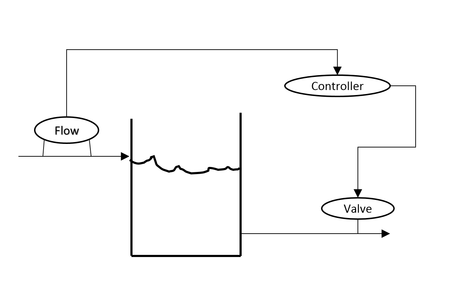Process controls
Author: Samson Fong [2015]
Stewards: Jian Gong and Fengqi You
Introduction
Process control is an important part in maintaining the output of a system within a desired range by manipulating various inputs. The objective of process control is to model a system’s behavior when a certain perturbation is made. This may be an artificial perturbation or system noise or drift. Practically, process control is used to maintain the desired output (flowrates, temperature, compositions, and other properties) In addition, process control is very important to ensuring the safety of the workers and the community in which the plant is a part of. Controlling the process at a certain operating conditions (including temperature and pressure) will prevent the system from reaching dangerous levels that may cause a run-away reaction or other hazards that may harm those around the plant (Towler et al.,2012).
This article addresses the theoretical background of process control rather than the mechanical instruments (such as valves, controllers, etc) used for the control.
Brief History
Automatic control systems dated as far back as the ancient Greeks around 300 BC when a Greek mathematician Ctesibius invented a water clock. However, formal mathematical formulations of control theory began by James Clerk Maxwell in his paper On governors in the Proceedings of Royal Society (1867-1868) (Maxwell 1867). The paper focused primarily on the steam engine.
Since Maxwell’s paper, the field has developed substantially and applied in a variety of fields. For instance, the Wright brothers had to develop dynamic control to sustain manned flight (Wright). Control theory also played an important role in stabilizing ships and even in space travel.
Defining inputs and outputs
The first step to designing or analyzing a process control scheme is to determine the various inputs and outputs. There are three broad categories for any given system: inputs, outputs, and constants or parameters. Inputs are any factors that change with time that affect the system’s output. The output refers to the desired controlled variable. Consider this as the objective of the model. Finally, the constants or parameters are simply any variables that stay constant with respect to time that do not impact the output’s dynamics.
Inputs can further be separated into disturbance inputs and manipulated inputs. Manipulated variables refer to the quantities that are directly adjusted to control the system. Disturbance variables refer to the quantities that affect the control variable that cannot be controlled. One useful method in determining disturbance variable is to identify the manipulated variables and outputs. All other variables (not constants) are generally disturbance input variables (Seborg et al.,2011).
Feedback control
Feedback control refers to a system where the controlled variable is measured while the manipulated variable is changed. Due to the delayed nature of the control scheme, a disadvantage is that the system is almost always wrong before any corrective measures are taken. However, since the output is measured directly, an accurate depiction of the output is known at all times (Seborg et al.,2011).
Case Study 1
The scheme above is intuitively a feedback control scheme. The level indicator will impart the information to the controller, and the controller will make the decision to whether to increase flow rate or decrease flow rate by adjusting the valve. The controller makes the decision according to the transfer function that it is calibrated with. Most practically, as the level indicator reads too high a level, the controller will open the valve in order to increase flow rate.
In this case, the disturbance input is the input flow into the surge tank, and the manipulated input is the flow rate out of the tank. Since the manipulated variable is what is being changed (via the valve), this is by definition a feedback control. Since the level of the fluid in the tank is being measured by the level indicator, it is the controlled variable.
Case Study 2
The scheme above is less intuitive. Since the valve is fixing the flow into the tank rather than out of the tank, it is common to misclassify this scheme as feedforward. However, careful consideration of variables show that the valve makes the flow into the tank the manipulated variable while the flow out simply becomes the disturbance variable. Similar to the first scheme, the controlled variable (the level) is still being measured. As a result, this is still a feedback control by definition. Note, that the position of the variables in the physical setup has little bearing on the classification (hence analysis) of the system.
Alternative depiction
This is an alternative depiction of a generic feedback control. In this diagram, information is treated equally as material flow where as previously, some diagrams distinguish the two by using dotted lines for information flow and solid lines for material flow. The main idea of this diagram is not to show the physical system, but the way the controller is interacting with the different elements.
This is useful in determining the transfer functions of the controller since the diagram depicts not only the different pieces of information that are flowing (from the controller C to the plant P which flows to the sensor F) but also the order in which they come in. In addition, two adjacent boxes are equivalent to multiplying the two transfer functions. As a result, a simple rearrangement will yield a transfer function that is representation of the system.
Quantitative Discussion of Feedback Control
Below are different schemes for feedback controller that decides how much of the valve is opened (in the previous examples) or how much to respond to the current pertubation. As one can see from the alternative depiction, feedback control is considered a closed-loop system as the information makes closed loop.
Proportional Control
p(t) refers to the controller's output while : refers to the steady state value of the controller. : refers to the controller gain, and e(t) is the error function. This type of controller simply responds proportionally with the error signal (which is the deviation from the setpoint). The greater the error, the greater the response. Mathematically, this first order function has no bounds, but in reality, it would reach a saturation point on both ends of the error.
While this controller would respond immediately to the error, this type of controller is susceptible to a steady-state error (or offset) following a sustained disturbance (Seborg et al.,2011).
Integral Control
- refers to the reset time. This type of controller is primarily a response to the inherent deficiency of proportional control as this would fix the offset error. However, used by itself, the controller does not take action until the error has accumulated since the controller only responds to the total summation of the error (the integral). Consequently, this is often used in conjunction with proportional control. In addition, integral controls, even when used in conjunction with proportional control, are very susceptible to oscillations (Seborg et al.,2011).
Derivative Control
This control scheme attempts to anticipate the disturbance by considering the derivative of the error. This type of anticipatory action makes a physical implementation difficult and a filter term is needed to make this controller feasible. In addition, this anticipatory scheme is also very susceptible to system noise. If the system changes slightly over a short period of term, the derivative term will be large, causing a large response. As a result, many industrial usages use a combination of all three schemes, known as a PID controller (Seborg et al.,2011).
PID Controller
This scheme is a combination of the previous three schemes. This scheme employs all the advantages of the three schemes. However, it also inherits the disadvantages. Most notably, the problem with derivative controllers where it would respond rapidly to a noisy system. As a result, each controller is often tuned specifically to the system on hand by tuning each parameter or by adding terms to the control algorithm (Rivera et al., 1986)
Feedforward control
Feedforward control refers to a system where the disturbance variable is measured and the controlled variable is not measured. The reason is feedforward control is a predictive control scheme where only an input is measured, and the control system will predict the appropriate control scheme to ensure the desired output occurs (Seborg et al., 2011).
Case Study
This scheme share many similarities with the second feedback scheme. It also has the flow into the tank as the manipulated variable while the flow out is the disturbance variable. However, this scheme does not show that the level is being measured. Since the controlled variable is not measured, it is classified as a feedforward scheme.
Industrial Usage
Ideally, a perfect feedforward control will be able preemptively adapt to any disturbances to the system and correct any disturbance quickly. However, any imperfection whether in the model or the mechanical implementation would lead to undetected behavior in the output.
In most industrial applications, feedforward control is usually not used by itself. However, it is often used in conjunction with feedback control in order to correct the main disadvantage of the feed forward control (Towler et al.,2012).
Formulating a Control Strategy
- Specify control objectives - For example, maintaining a process variable at a setpoint
- Identify input variables in the system
- Identify output variables in the system
- Identify any constraints for the system
- Constraints should also be classified as “hard” or “soft.” Hard constraints are those that cannot be violated without significant issues, such as #environment, health, and safety concerns. Soft constraints are those that ideally would not be violated, but would not result in an extreme issue, #such as maintaining product purity.
- Specify operating mode as batch or continuous
- Identify safety, environmental, or economic needs
- Identify a control strategy
Instrumentation
Accurate, reliable measurement systems are key to good process control.
Sensors, Transmitters, and Transducers
Sensors are devices that measure process variables and produce a physical response. Transmitters then converts the signal from the sensors to one that can be utilized in controllers.It should be noted, however, that the terms sensors, transmitters, and sensor-transmitter can be used interchangeably, and often are in process control literature. Transducers are instruments that convert instrumentation signal between forms.
Selection Criteria for Sensors
There are many considerations when choosing a sensor. These include:
- Measurement range (span) - The typical range of a process variable must be within the measurement range of the instrument
- Performance - Accuracy is generally considered the most important performance metric, however, this may differ in some processes
- Reliability - Repeatability across a span of time is indicative of long-term reliability
- Materials of construction - The instrument must be able to withstand process conditions, including temperature and pressure, and be compatible with any contacting fluids
- Prior use- Familiarity of operating personnel with the equipment leads to an easier transition
- Potential for loss of primary containment- This consideration is key for preventing exposure of hazardous materials to operators and preventing environmental contamination
- Invasivity - Insertion of a probe has potential to cause fouling, which should be taken into account during selection.
References
Encyclopaedia Britannica. Greek physicist and inventor, the first great figure of the ancient engineering tradition of Alexandria, Egypt
Maxwell, J.C. On Governors. Proceedings of the Royal Society of London; 1867.
Rivera, DE. , Morari M , Skogestad S. Internal model control: PID controller design. ACS Publications.
Seborg DE, Edgar TF, Mellichamp DA, Doyle FJ. Process Dynamics and Control. 3rd Edition. Wiley; 2011.
Towler GP, Sinnott R. Chemical Engineering Design: Principles, Practice and Economics of Plant and Process Design. 3rd Edition. Elsevier; 2012.
Wright, Wilbur. Flying Machine patent. US Patent 821,393
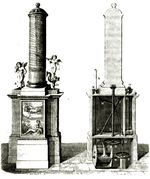
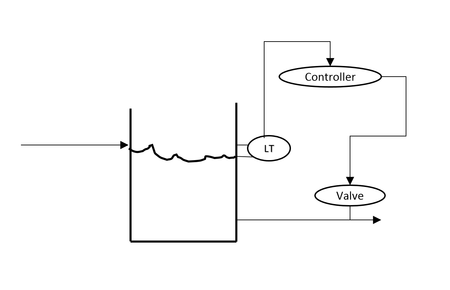
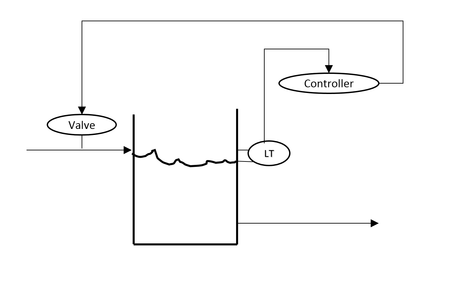
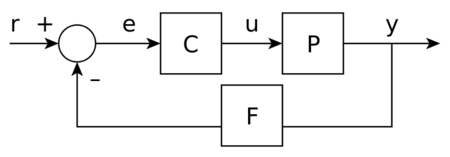






![{\displaystyle p(t)=p_{s}+K_{c}\left[e(t)+{\frac {1}{\tau }}\int \limits _{0}^{t}e(t){\text{d}}t+\tau _{D}{\frac {\text{d}}{{\text{d}}t}}e(t)\right]}](https://wikimedia.org/api/rest_v1/media/math/render/svg/a0890cac53eb24e7ae70bd9b059a29900757c0b8)
